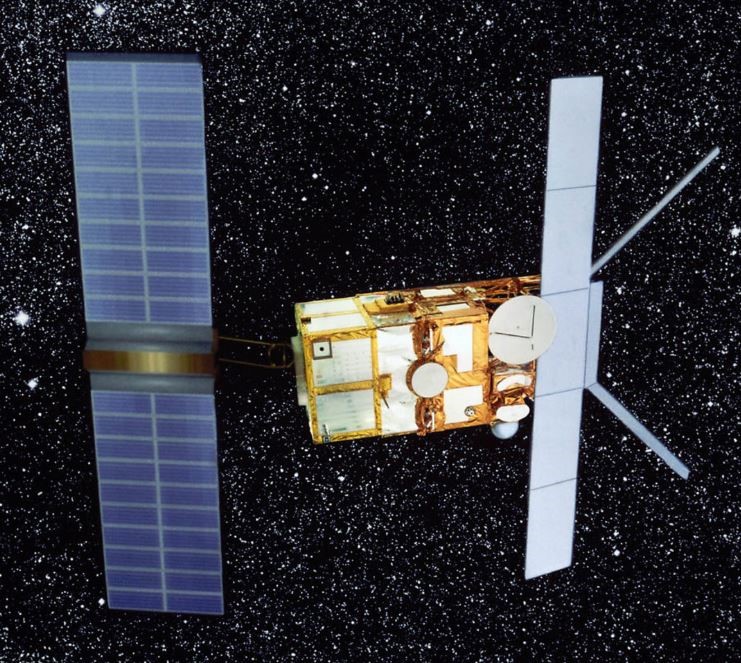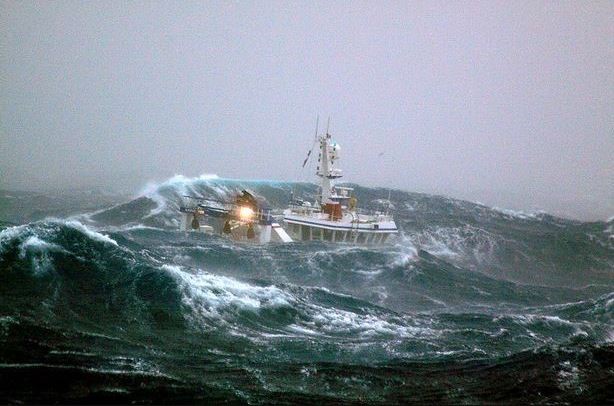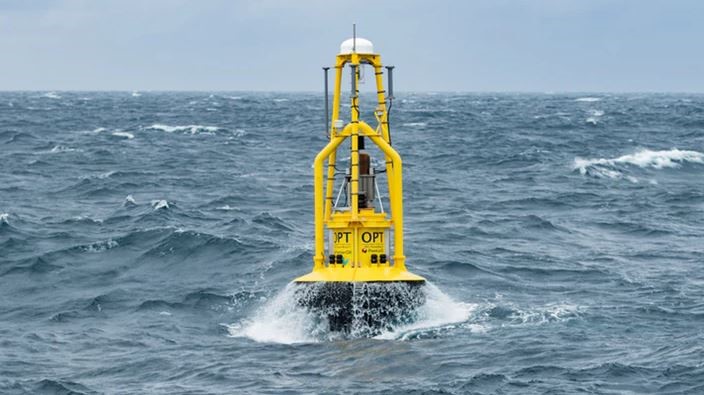Rogue Waves – Part IV
By Dag Pike
Colliding Waves
Waves normally come along in a regular pattern, with one following the other. However, you can get two or more wave trains in the same place at the same time. To understand rogue waves, it is important to appreciate that when two waves meet in the same place, the height of the resulting waves is the combined height of the two waves. So, two 10-footers meeting will become a 20-footer. Knowing this means that it is not so hard to realize how more extreme wave heights can occur. So how do different wave trains manage to be in the same place at the same time?
One of the latest theories relates to deep depressions, the depressions that cause storms. The bigger a wave is, the faster it travels. So when a depression is deepening, there are smaller and slower waves being generated at the beginning, which are then followed by larger and faster waves. It could be that when these larger waves catch up with the slower waves and the two crests combine that you can get a rogue wave that combines the height of the two crests.
That sounds plausible, and another possible cause is when two or more wave trains are crossing, running at different angles. Once again, you get the combined height of the two waves. This will tend to cause the pyramid type of rogue waves that some have reported. In both cases, the rogue wave will be transient, appearing and disappearing as the wave crests combine, although those formed by one wave train catching up another will last longer.
Satellite detection is a new tool in rogue wave research, and a satellite can scan much larger areas of the sea looking for the unusual. It is probably this satellite detection that has led to the increased knowledge and frequency of extreme or rogue waves. Under a program known as MaxWave that is funded by the EC in Europe, satellite detection of extreme waves has shown that not only do the waves occur much more frequently than previously thought but that they occur in most sea regions.
However, the increased detection frequency could be because of a revised specification for what constitutes an extreme wave. Their definition of a rogue is any wave that is just twice the height of the significant wave height. Any seaman will tell you from experience that waves of this size are a relatively frequent experience, and the statistics show this. In my book, extreme or rogue waves are what the name suggests, waves that are extreme in size, and therefore much larger than the more regular pattern of waves. Some wave recordings show waves of four times the significant wave height, which could be a real monster.
Dangerous Troughs
What is interesting about the recordings of that 100-foot wave is that the trough is deeper below the median line than the wave crest is above it. We always talk about wave height, which is the distance between trough and crest. You picture a ship trying to climb over the huge crest of an extreme wave. In reality, the chances are that it is the deep trough that comes either before or after the high crest that does the damage.
These deep troughs or “holes” are like the reverse of an extreme wave. When a ship or boat falls into them, the chances of climbing out unscathed are small. This is when the ship is vulnerable, and the following wave can deposit tons of active water on the deck to cause serious damage. This is what happened to the Polar Front. There is a chance that you might see an extreme wave crest some way off so that there is a chance to do something about it. You don't see one of these “holes” until you fall into it, and by then it is too late.
Many yachts have reported encounters with large waves. Of course, we only hear about those that have survived. It would seem though that small boats have a better chance of survival as they lift and fall to the waves, while ships will tend to batter their way through them because they as less buoyant. This is what causes the damage.
Reported encounters with extreme waves have been relatively rare, although statistics are hard to come by. The MaxWave program suggests that more than 200 large ships have been lost to rough seas and severe weather over the past 20 years. Whether this is due just to rough seas and damage or mechanical failure is not specified. The actual recorded encounters with extreme waves are much lower. Weather ships that have been cruising in open ocean waters on a continuous basis in the North Atlantic have recorded big waves, up to 75 feet in height. You might expect that if these extreme waves were a frequent occurrence, then these weather ships would have experienced them.
Recording Buoys
Most of the weather ships have now been replaced by recording buoys that are equipped with weather monitoring equipment, and they can send in continuous reports or weather and sea conditions. During some of the major storms that have occurred off the coast of North America, these buoys are reported as having recorded waves of over 25 meters, which is over 80 feet. Because these waves are associated with violent storm conditions, it is thought that these waves are transient peaks created in the confused seas. The buoys tend to be moored in relatively shallow waters. This is likely to increase the height of the waves compared with those in the open ocean.
Wave Types. As we start to get a better picture of these extreme waves and holes, there are three types of extreme waves that are emerging. There is the three “sisters” type, where the wave is one of three very large waves. It is suggested that these are created by a secondary wave train being superimposed on the more regular waves. This may be the type of wave that the Discovery experienced. Then, there is the wave tower, a sort of pyramid wave that exists as a single peak and could be caused in part by current focusing that causes large wave trains to cross each other at a shallow angle. Finally, there is the white wall, a huge wall of water approaching that looks vertical with the crest starting to break. Several yachts and ships have reported this type of extreme wave. It must be one of the most frightening experiences of a life at sea, as I can testify from personal experience.
On a final note, if you want to avoid rogue waves, then avoiding the more extreme weather conditions on the oceans is the way to go. It sounds easy and with modern forecasting, it should be possible. But out in the middle of the ocean on a long passage, you may have nowhere to run to and hide.



